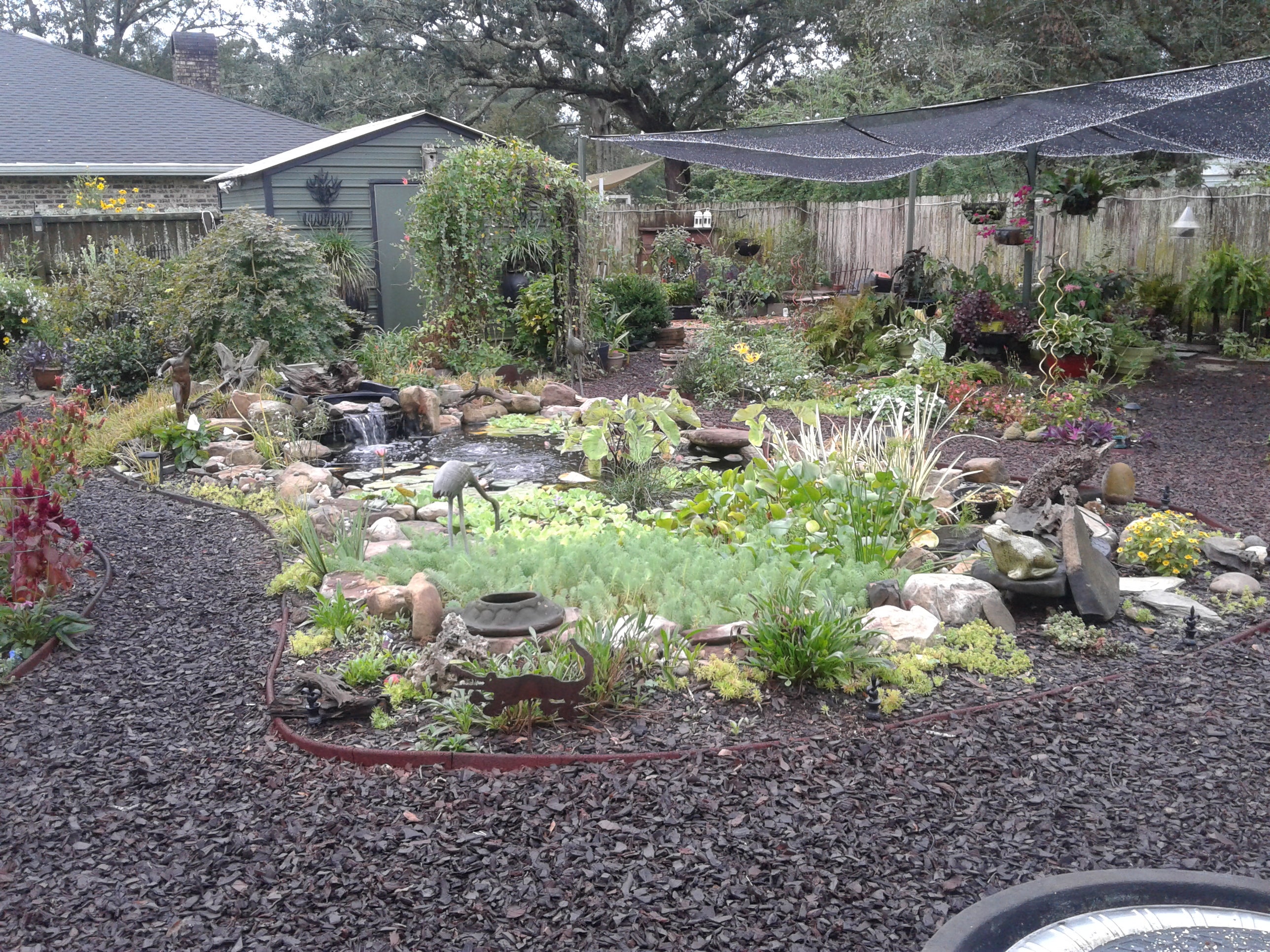Cottage Water Garden
Published 6:30 am Sunday, November 7, 2021
|
Getting your Trinity Audio player ready...
|
My passion for gardening began as a little girl while helping my grandfather with his vegetable garden. That was decades ago, but the passion for gardening still remains. Although I only grow a few vegetables now, usually mixed in with my flowers, I still like to get my hands in the dirt.
I prefer what is called a cottage garden, which allows me to have a variety of shrubs and flowers. You never know what you will find around a garden path. It could be blueberries and eggplant all mixed in with zinnias and coneflowers.
During the Covid quarantine, my gardening has been extended to include a 1500 gallon water garden. That has led me to explore plants used in and around my water garden. Surprisingly, I found that many of my “flower garden” plants adapted well to my “water garden”. Louisiana iris (Iris fulva), swamp milkweed (Asclepias milkweed), taro or elephant ear (Variegatum monstrosum), creeping jenny (Lysimachia nummularia) and sweet flag iris (Acorus calamus) just to name a few.
Then come the water plants, parrots feather (Myriophyllum aquaticum) and water lilies (Nyphaeaceae). All of these plants are lovely, floating just on the water’s surface. My favorites are the water lilies, with the variety of colors and sizes in which they come.
Floating plants provide shade and protection for fish and help control algae but shouldn’t be allowed to multiply out of control. No more than 60% of the water surface should be covered with plants, because oxygen enters the water where it is met with air. Floating plants also provide natural filtration of the water. Marginal water garden plants are best planted in unscented, non-clumping kitty litter (which is clay) and covered with sand and pea gravel or flat stones. Koi like to nose around the surface of pots. Stones will deter them from uprooting the plants. Also, a fertilizer made especially for water plants is recommended.
Monitoring the pH of the water garden is important. 6-8.5 is acceptable pH. If the water is too acidic, it can stress both the plants and fish. All of this sounds like a lot of work, and I won’t lie, it is. However, it is so worth the effort, just like in my cottage garden. See, the real jewels of my water garden are the goldfish and koi for flashes of orange and yellow that mimic the blooms in my cottage garden.
Since retirement, I have taken the MSU Master Gardener course and am now proud to say I am a MSU Master Gardener of Pearl River County and just this year have become a Louisiana State University Advanced Master Gardener. If you are interested learning more about the Master Gardener program, call 601-403-2280. Come join us and have fun!
All that being said, I still just like getting my hands in the dirt and now water, too!
By: Bertha Page, MSU Pearl River County Extension Service Master Gardener





